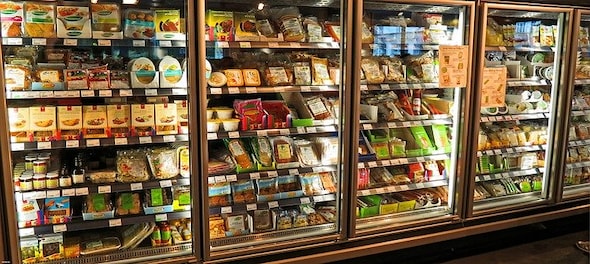
Authored by: Shashank Mehta
A large part of modern-day food comes out of a packet. That morning cookie, that evening snack, that ‘healthy’ granola, the 100 percent natural, no-sugar-added juice that goes with it—the list of packaged food items being consumed by urban consumers is increasing every day.
What’s also increasing though, are health concerns. With obesity, diabetes, heart problems all touching historic highs, consumers are very concerned about what’s going into their food, and ultimately into their bodies. And that concern isn’t unfounded!
Many food manufacturers have taken to using a host of tricks and deceptions in an attempt to pass off highly processed and unhealthy products as wholesome and nourishing. Dolled up in fancy packaging, advertised and marketed using all the right set of aspirational, focus-group approved buzzwords, and promoted by celebrity ambassadors and self-proclaimed fitness gurus, the products practically sell themselves—no matter how harmful they may actually be.
It's to help consumers see-through this marketing trickery, that food regulators around the world, created the nutrition-label. A mandatory snapshot of all that’s gone into making the food you’re about to consume, along with its nutritional benefits. Every packet of food needs to have this label, and there are strict guidelines around the information it needs to carry.
For example, did you know that the FSSAI mandates that ingredients in the ingredient list need to be listed in decreasing order of constitution? Yes, so if sugar is that first ingredient in your cola, then it’s the largest ingredient by weight.
Or that FSSAI mandates every manufacturer to list the nutritional values (protein, carb, fat and calories at the very least), as per RDA recommended diet for an average male adult, in one of 2 serving sizes—100 gm or Per Serve. The manufacturers get to choose one.
The regulators have tried their best to make a rule book that’s very specific, yet leaves enough room to accommodate the various products and pack formats that lakhs of food manufacturers in this country make and sell. And that’s where the problem begins.
What was intended to be a margin to accommodate different food types and formats, is being exploited by Big-Food(the ones with massive R&D teams and legal budgets) to obfuscate facts and sometimes straight-up lie to consumers. Here are a few examples.
Ever wondered why your packet of chips, or bottle of cola, has nutritional information per 100gm or ml? After all, the packet is 30g and the bottle is 330ml. What use is 100ml information to you, when you’ll most probably consume the entire bottle in one go?
Well, the idea is to make sure you never calculate—because if you did you’d find out that when you empty one bottle, you also empty 12 teaspoons of sugar! Would you still drink that bottle if the packet clearly stated that?
Here’s another one. Pick up a packet of juice that says 100 percent no-sugar-added. And compare it to a regular juice packet. Somehow, both of them will have the exact same sugar and calories. But how? If they didn’t add any sugar to this one, shouldn’t the total amount go down?
Well, as per FSSAI guidelines, the manufacturers only need to declare the stuff added by them. If the guy who supplies the pulp for the juice added the sugar, then it’s not the manufacturer’s responsibility to call it ‘added-sugar’. Because they didn’t add it!
Your sugar-free cookie or chocolate has either Maltodextrin, or Soluble Corn Fibre (SCF) or Maltitol or some other chemical that mimics sugar, but as per FSSAI guidelines doesn’t need to be labelled as ‘sugar’. So the manufacturer gets to say ‘sugar-free’!
The sumptuous photograph of oats flooding your ‘oat cookie’ packet, has a star mark that says ‘image is a creative’ rendition’. At the back, you realise that cookie has just 7-10 percent oats. Ninety percent it’s the same as your regular ‘unhealthy’ cookie.
The list just goes on and on.
Point is, it’s high time manufacturers started following labelling regulations in spirit. FSSAI needs to govern millions of manufacturers and it doesn’t have a tenth of the budgets Big-Food has. So the moral imperative lies with the latter —to be truthful to consumers.
Why hide the ingredient list in the microscopic font at the back in a corner? If you’re proud of the food you serve, why not declare it upfront? Why not give ingredients as much ‘centre-stage’ importance as you give to attractive food photos and tall-claims and witty marketing lines?
In food, as in life, we hide only that which we’re ashamed of. It’s high time we changed that. High time we gave the ingredient list and the humble nutritional label their due importance.
Let’s bring the back to the front. Let’s make our food real again.
—Shashank Mehta is Founder, The Whole Truth. The views expressed are personal
First Published: Oct 1, 2020 6:05 PM IST
Check out our in-depth Market Coverage, Business News & get real-time Stock Market Updates on CNBC-TV18. Also, Watch our channels CNBC-TV18, CNBC Awaaz and CNBC Bajar Live on-the-go!


BJP holds meeting in Delhi as polling underway for 5th phase
May 20, 2024 4:21 PM
UP Police arrests man after viral videos shows him voting multiple times
May 20, 2024 2:18 PM

